Here Kitty Kitty: The Roaring VFX of ‘Beast’
VFX Supervisor Enrik Pavdeja, along with Framestore, BlackGinger, and The Third Floor, deliver a bloodthirsty, rogue, fully CG lion involved in 240 shots, including a number of enormously long 5,000-10,000 frame one-takes, on Baltasar Kormákur’s survival thriller.
For a movie with a fully CG title character – a rogue, bloodthirsty lion - Universal’s Beast surprisingly has only 240 visual effects shots. As it turns out, that number is deceptive, as eight to nine shots each encompassed between 5,000 and 10,000 frames. Not surprisingly, the sheer length of these one-take wonders was the biggest challenge for VFX Supervisor Enrik Pavdeja, main vendor Framestore, and BlackGinger.
Notes Pavdeja, “Basically, we have shots that are a whole sequence. The way we dealt with it was to have a master shot which was the full length 10,000 frames and within that we had smaller and more manageable sections referred to as ‘child shots.’”
Previs by The Third Floor was a critical part of the process. “A lot of the time the lion [lead CG character] is interacting with the environment or characters so most of it was us having to grasp exactly what we were trying to shoot.”
Icelandic filmmaker Baltasar Kormákur was keen not to have obvious stitches - such as wipes - going through the frame. “Once we started putting those shots together a lot of the stitching came from full CG takeovers,” reveals Pavdeja. “Some environments were procedurally generated, but anything somewhat close to camera had to match as closely as we could to plates. We took thousands and thousands of reference images of every type of tree, branch, leaf, and ground to be able to go in and recreate all those individual assets that we would then dress and art direct.”
Creatures had to be both photorealistic and naturalistic in their behavior. According to Pavdeja, “We spent a good year developing these beautiful lions. We built tools internally that allowed us to review small sections of shots at a time. It meant that we could have departments work on their child shots and automatically propagate through to the master shot. We always had the latest and greatest visible layer where the whole sequence was there. Then of course internally in terms of the dynamic work. Lions have incredibly complex muscles. Essentially, we had to build tons of blend shapes of these muscles that were triggered by the animation. Then we had the skin sliding on top of that.”
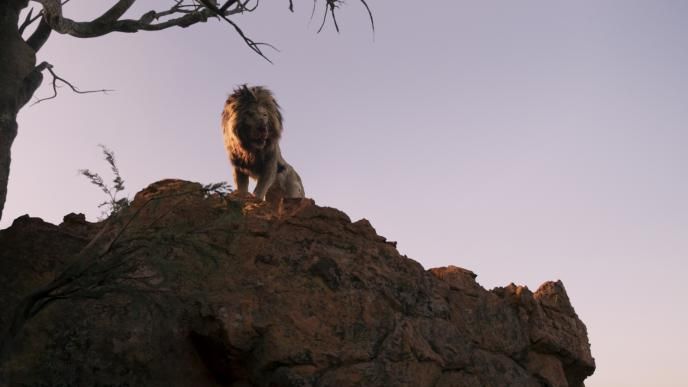
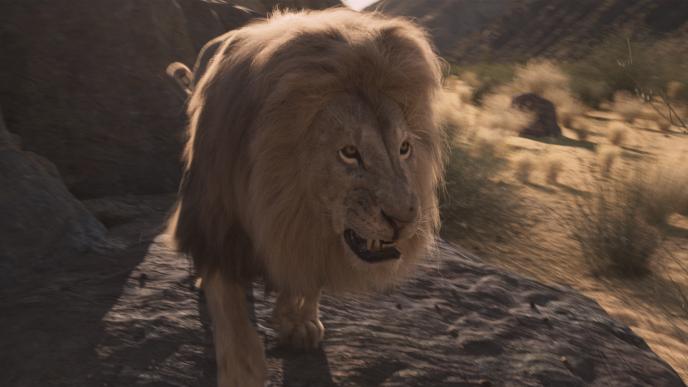
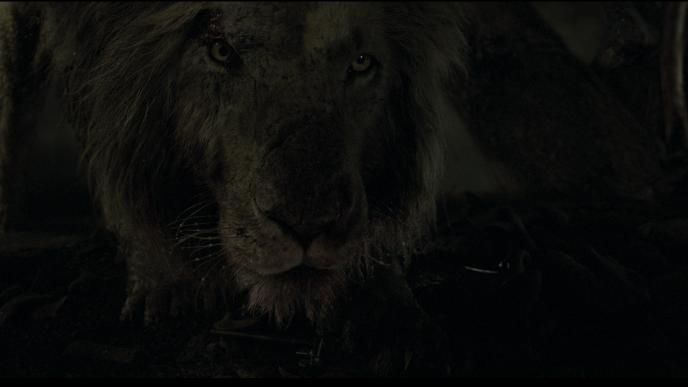
One of Pavdeja’s favorite moments is when Martin Battles [Sharlto Copley] hugs some lions he has raised since they were cubs. “For that piece, we had two guys in grey suits in the shape of lions effectively tackling Sharlto and trying to get the same sort of weight and movement of what the lions would be doing. It was full CG replacement of anything lion and any interaction with Martin.” The fight at the end between the lion and Dr. Nate Samuels (Idris Elba) employed a similar scenario. “For the most part it was a full digital body of Idris and digital lion with all the environment and interaction work, the creature effects on the cloth, the interaction between his clothing ripping and tearing and the biting. All close to camera and a long take.”
The production assembled a massive library of realistic lion reference material. “We tried to study closely how lions act in the wild, how their features react, how they’re running, understanding their muscular and the skin sliding and how the fur is moving,” Pavdeja says. “A lot of that was essentially taken and built into specific rigs that would allow us to have that control and a lot of it was painstakingly hand animated to be correct. Then the CFX guys did an incredible job of matching all of that so you didn’t get that feeling of squash and stretch. It felt more realistic.”
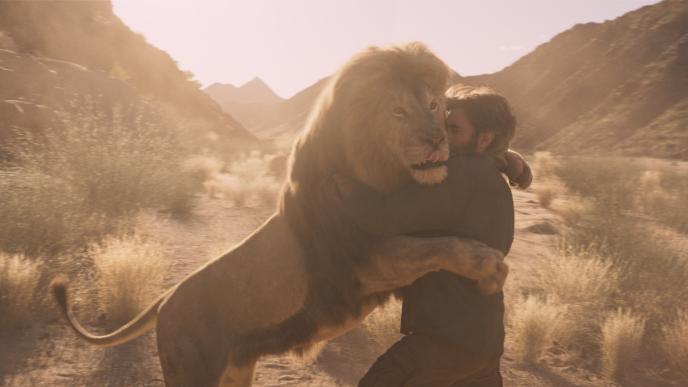
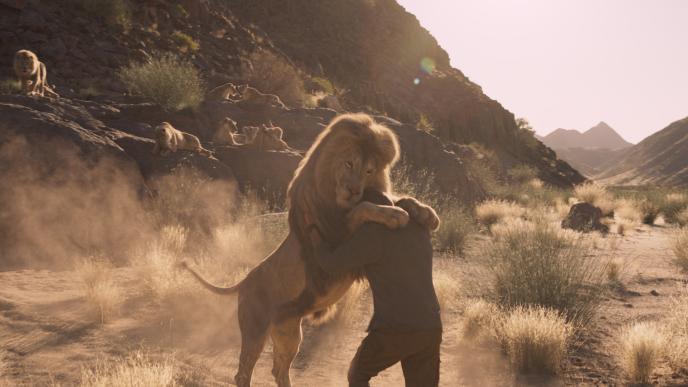

The production required an especially close relationship between stunts and special effects. “We had choreography with stunts, special effects built essentially a stage car where you could take it apart completely and rebuild it again for the shots that required it,” reveals Pavdeja. “There was careful planning from the previs stage of us figuring out where the camera would be, and what sort of interaction would we’d need between the actors and car. When we came to the stuntman, it was another guy in a grey suit, or we had a handheld option of a lion head, which was a Styrofoam head that could be used to bang against the window or as an eyeline for the shot. It was all meticulously thought out with those departments to make sure we had a way of getting the correct reaction onset that we could then replace later.” Everything had to feel real and naturalistic. “It’s a lion mauling people as a reaction to what they have done to its environment. Throughout the film, blood features quite a lot, especially on the face and paws of the lion. Where there have been attacks you need that progression. In the last scene where the lion is fighting Idris there is a lot of lion biting, scratching, blood, tearing of cloth and wounds appearing. All those elements come together quite strongly.”
The sheer length of the shots posed major challenges. “We are looking at thousands of frames of closeup long interaction work where there is nowhere to hide and breakaway,” explains Pavdeja. “All of the simulations have to work together running the same 3,000 frames, which is a complication in itself. On top of that we have all of these interaction pieces between digital doubles, characters and environment. The biggest challenge was dealing with the sheer volume of data and being creative at the same time and trying to make these shots as beautiful and incredible as you can with the challenge of them never ending!”
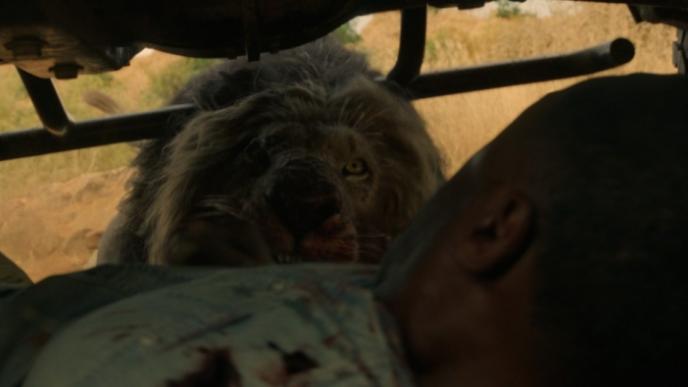
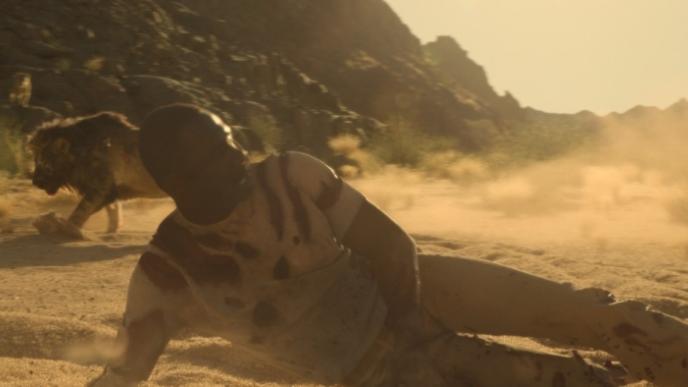
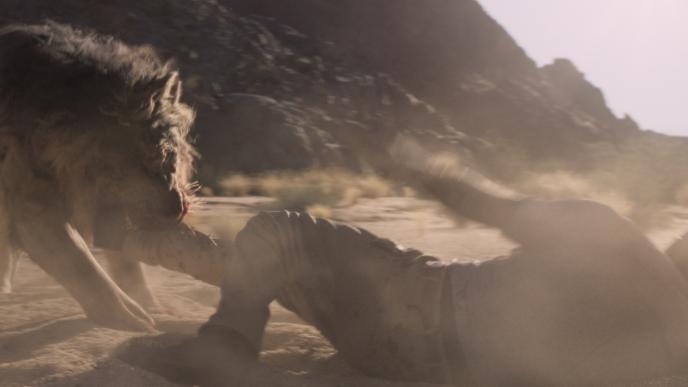
Two scenes standout to Pavdeja. “The lion hug scene is quite a special moment in cinema. Two lions and a human interact in such a beautiful and peaceful way. It’s not just photoreal but photo natural. Then the end fight between Idris and the lion. It’s a completely crazy action-packed scene. It’s a man being mauled by a lion. Something you wouldn’t see otherwise. Hopefully, you will never see that in the real world.”